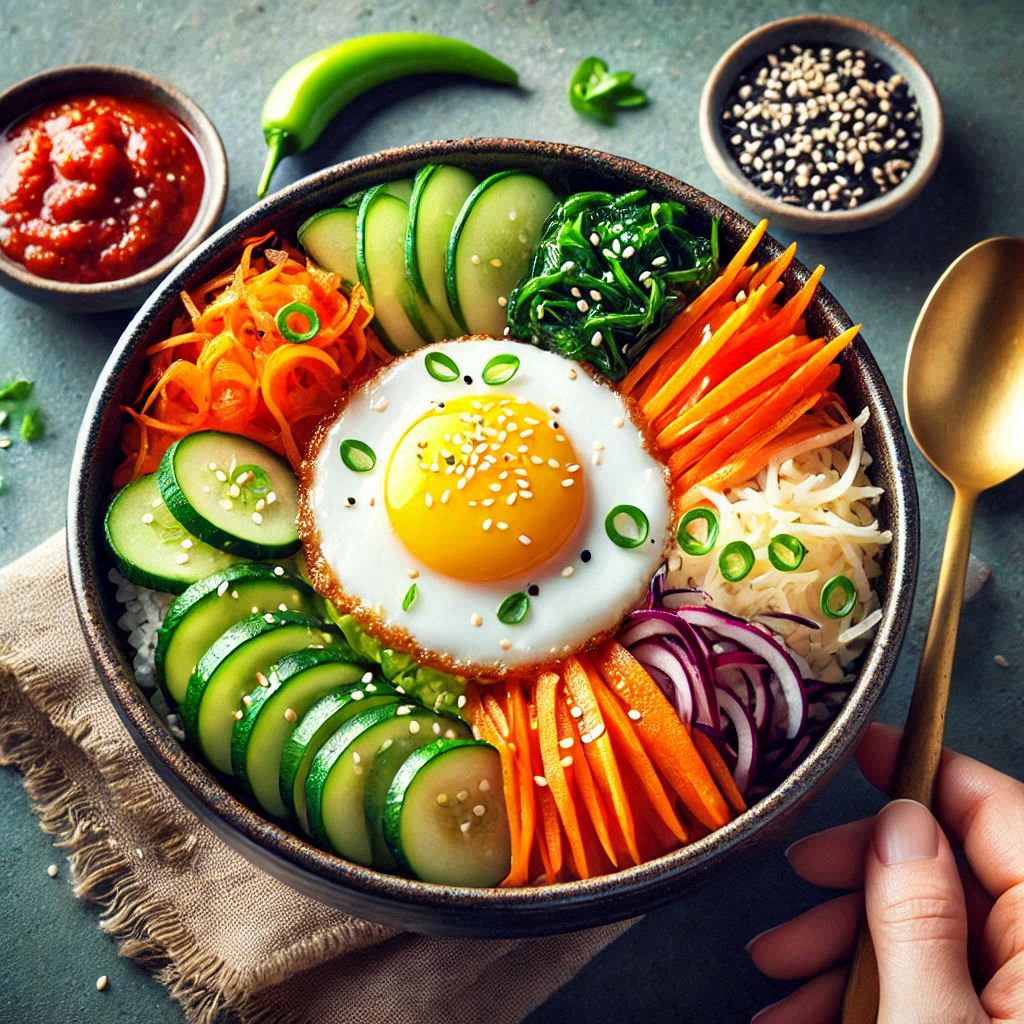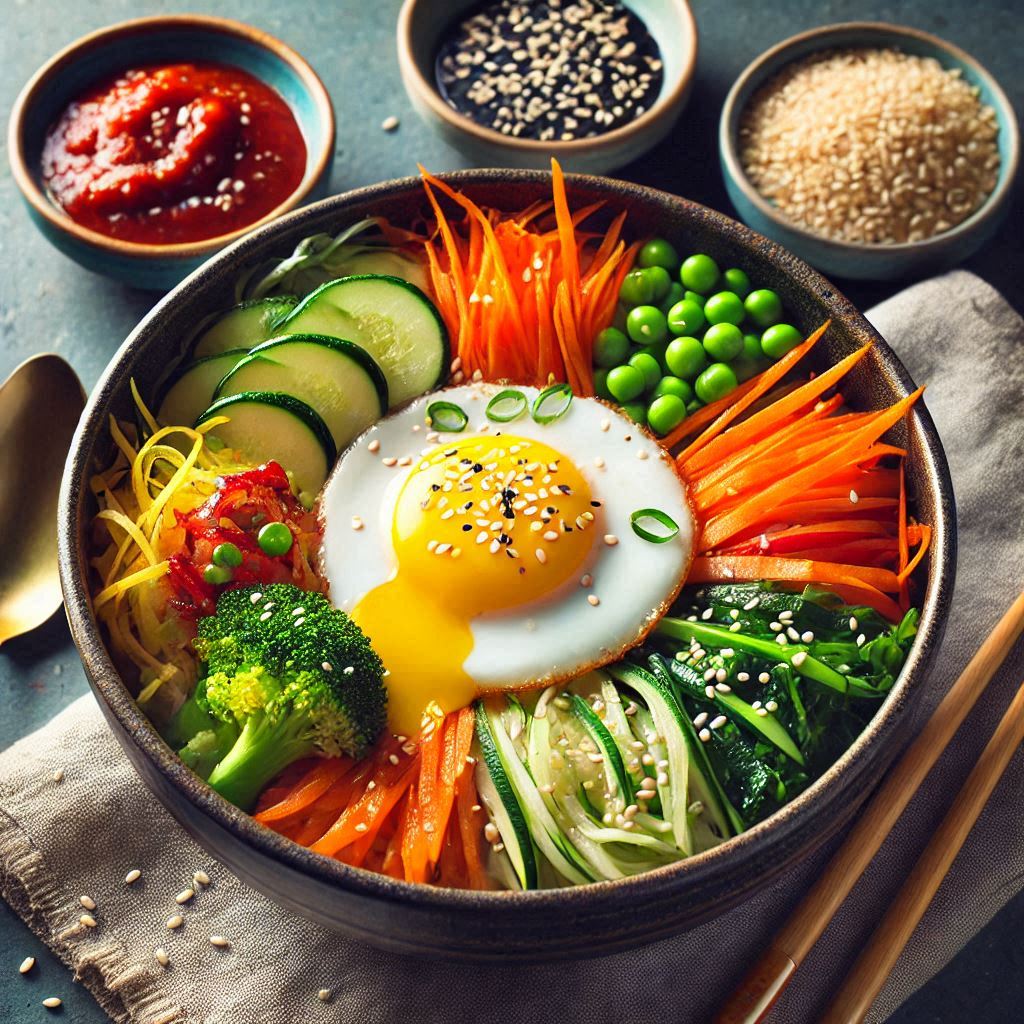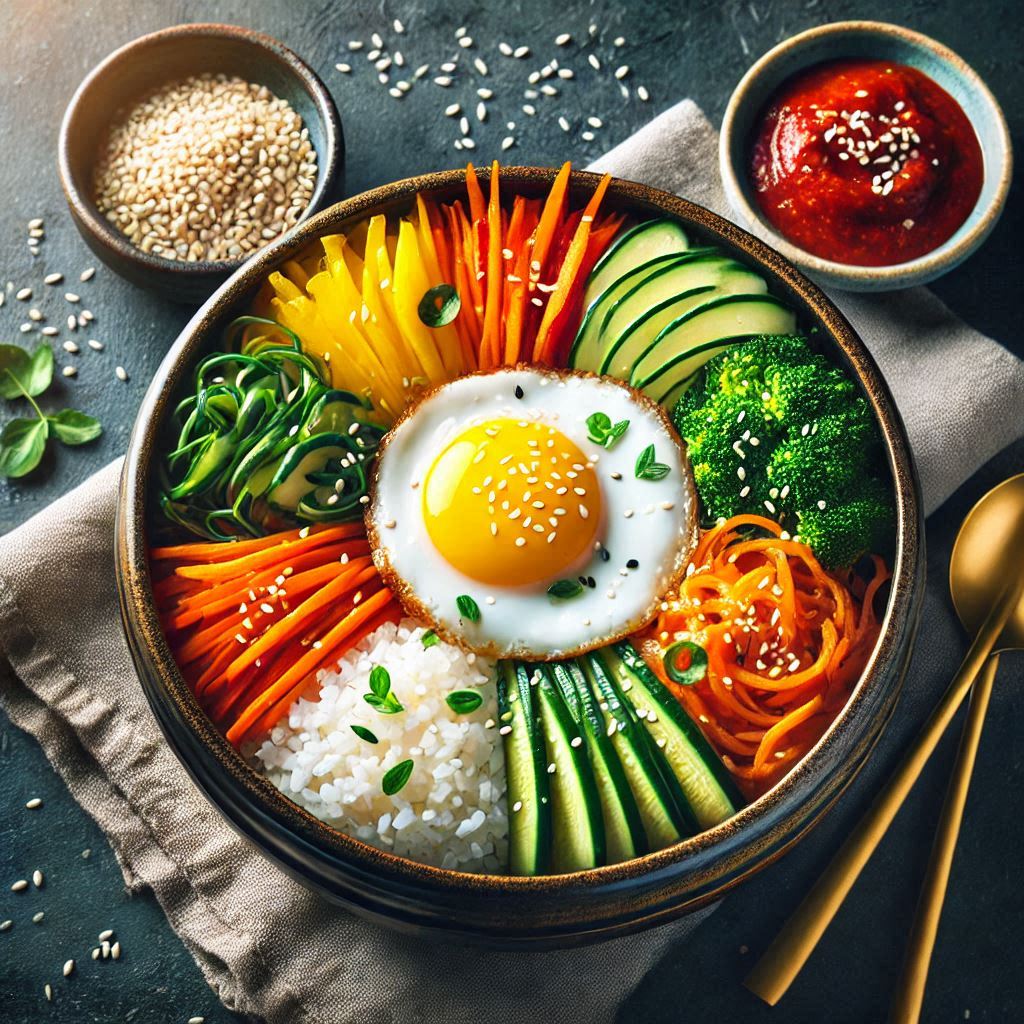韓國料理中最具代表性的經典美食:韓式拌飯(Bibimbap)
韓式拌飯(Bibimbap)是韓國料理中最具代表性的經典美食,以多樣的配料和豐富的色彩聞名。核心是米飯,上面鋪滿各種蔬菜、蛋、肉類和醬料,最後攪拌均勻即可享用。它的味道鮮美且營養均衡,深受全球食客的喜愛。以下是關於韓式拌飯的詳細介紹和做法。
主要材料是白米飯,這是菜品的基底,需要煮得軟硬適中。此外,拌飯的配料通常包括胡蘿蔔、黃豆芽、菠菜、韓國泡菜、香菇、牛肉(或雞肉、豬肉)、雞蛋,以及韓國辣椒醬(Gochujang)。為了增加香氣,還可以加入芝麻油和炒熟的白芝麻。配料的選擇非常靈活,根據個人喜好還可以加入其他蔬菜,如西葫蘆、青椒、紫菜等,甚至可以製作素食版本。
製作部分,首先將白米洗淨後煮熟,保持米飯的溫熱和鬆軟,這是拌飯成功的基礎。米飯煮好後可以暫時放置鍋中保溫,等待其他配料準備完成。接著,準備配料。胡蘿蔔切絲、菠菜燙熟後用冷水沖涼擠乾,香菇切片,黃豆芽洗淨備用。牛肉切薄片後,用醬油、糖、蒜末和少許芝麻油腌製10分鐘,這樣可以讓肉更加入味。
在平底鍋中分別炒制每種配料。胡蘿蔔絲和香菇片用少許鹽和油炒至熟透;黃豆芽和菠菜分別用鹽和芝麻油調味拌勻;腌好的牛肉在熱鍋中快速翻炒,直到完全熟透且香味四溢。每種配料炒好後單獨裝盤備用,這樣可以保持它們的原始顏色和味道。雞蛋可以煎成半熟的太陽蛋,也可以全熟,根據個人喜好選擇。煎好的雞蛋是拌飯中不可或缺的亮點,能增添濃郁的蛋香。
最後,組合拌飯。將煮好的白米飯盛入一個大碗中,依次將炒好的胡蘿蔔絲、黃豆芽、香菇片、菠菜、泡菜和牛肉分別擺放在米飯上,注意擺放時要有條理,讓每種配料形成分明的區域,這樣拌飯的賣相會更加美觀。最後在中央放上煎好的雞蛋,並淋上一勺韓國辣椒醬和幾滴芝麻油,撒上一些炒熟的白芝麻作點綴。在上桌時,可以讓食客自行將配料、辣椒醬和米飯攪拌均勻,讓每一口都能品嘗到不同配料的風味融合。
製作小貼士
1.配料的選擇可以靈活變化,但不同的蔬菜應該保持獨立處理,以確保色彩鮮明、口感分明。
2.韓國辣椒醬是拌飯的靈魂,可以根據口味調整用量,或者加入少許糖來平衡辣味。
3.如果想要更傳統的風味,可以用石鍋裝盛米飯,這樣底部會形成一層金黃酥脆的鍋巴,更具特色。
韓式拌飯色彩豐富,口味多樣,既有蔬菜的清爽,也有肉類的香濃,加上辣椒醬和芝麻油的提味,每一口都充滿驚喜。這道菜不僅適合作為主食,還能體現韓國料理的文化和精髓。
Bibimbap is one of the most iconic and classic dishes in Korean cuisine, renowned for its variety of ingredients and vibrant colors. At its core is steamed rice, topped with an assortment of vegetables, egg, meat, and sauce, all mixed together before eating. With its delicious flavors and balanced nutrition, bibimbap is beloved by food lovers worldwide. Here’s a detailed introduction and recipe for bibimbap.
Ingredients
The main ingredient is white rice, which serves as the base of the dish and should be cooked to the perfect texture – soft yet firm. Typical bibimbap toppings include julienned carrots, soybean sprouts, spinach, Korean kimchi, mushrooms, beef (or chicken/pork), egg, and gochujang (Korean red chili paste). To enhance the flavor, sesame oil and toasted sesame seeds are often added. The choice of toppings is highly flexible – additional vegetables like zucchini, bell peppers, and seaweed can be included, and vegetarian versions can also be made.
Preparation
Cooking the Rice – Wash and cook the white rice, ensuring it remains warm and fluffy, as this is crucial for a successful bibimbap. Once cooked, keep the rice warm in the pot while preparing the other ingredients.
Preparing the Ingredients –
Carrots – Julienne the carrots.
Spinach – Blanch the spinach, rinse in cold water, and squeeze out excess moisture.
Mushrooms – Slice the mushrooms.
Soybean Sprouts – Rinse and set aside.
Beef – Slice the beef thinly and marinate it with soy sauce, sugar, minced garlic, and a little sesame oil for 10 minutes to enhance its flavor.
Cooking the Toppings –
Sauté each ingredient separately in a pan. Cook the julienned carrots and sliced mushrooms with a little salt and oil until tender.
Season the blanched spinach and soybean sprouts with sesame oil and salt.
Stir-fry the marinated beef over high heat until fully cooked and fragrant. Once each ingredient is cooked, plate them individually to retain their distinct flavors and vibrant colors.
Fry the egg – It can be cooked sunny-side-up or fully, depending on personal preference. A fried egg adds a rich, savory element that is essential to bibimbap.
Assembling the Bibimbap
Scoop the cooked rice into a large bowl. Neatly arrange the sautéed carrots, soybean sprouts, mushrooms, spinach, kimchi, and beef on top of the rice in sections, creating visually distinct areas for each ingredient. Place the fried egg in the center, drizzle with a spoonful of gochujang, a few drops of sesame oil, and garnish with toasted sesame seeds.
When served, diners can mix all the ingredients, chili paste, and rice together, ensuring each bite is a flavorful combination of the various toppings.
Tips for Success
Ingredient Flexibility – Toppings can vary, but each vegetable should be cooked separately to preserve their unique colors and textures.
Gochujang – This chili paste is the soul of bibimbap. Adjust the quantity to suit your taste, or add a bit of sugar to balance the spiciness.
Stone Pot Variation – For a more traditional flavor, bibimbap can be served in a hot stone bowl (dolsot). The rice forms a golden, crispy crust at the bottom, adding a delightful crunch to the dish.
Flavor and Presentation
Bibimbap’s rich colors and diverse flavors offer a refreshing combination of vegetables, savory meat, and the bold heat of gochujang. The addition of sesame oil enhances the dish, making each bite a pleasant surprise. Bibimbap is not only a satisfying main dish but also a reflection of Korean culinary culture and essence.



照片:DALLE3
- 1
- 2
- 3
- 4
